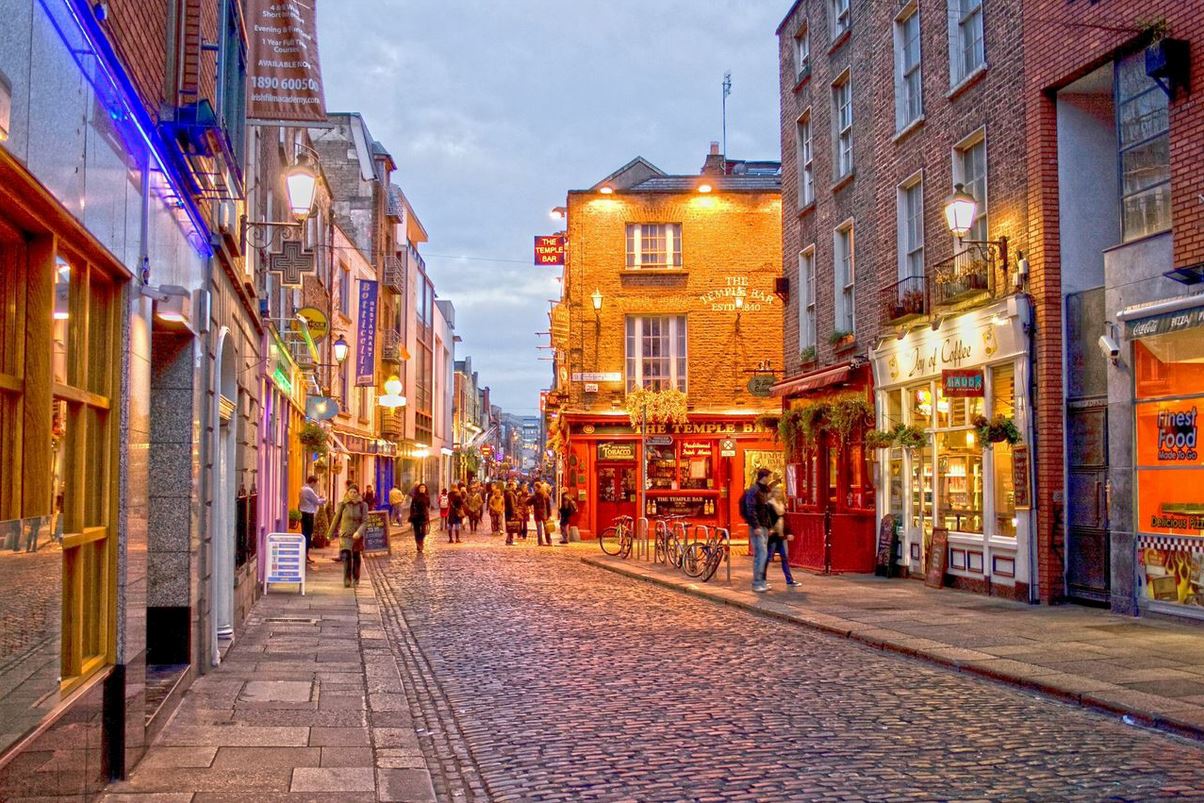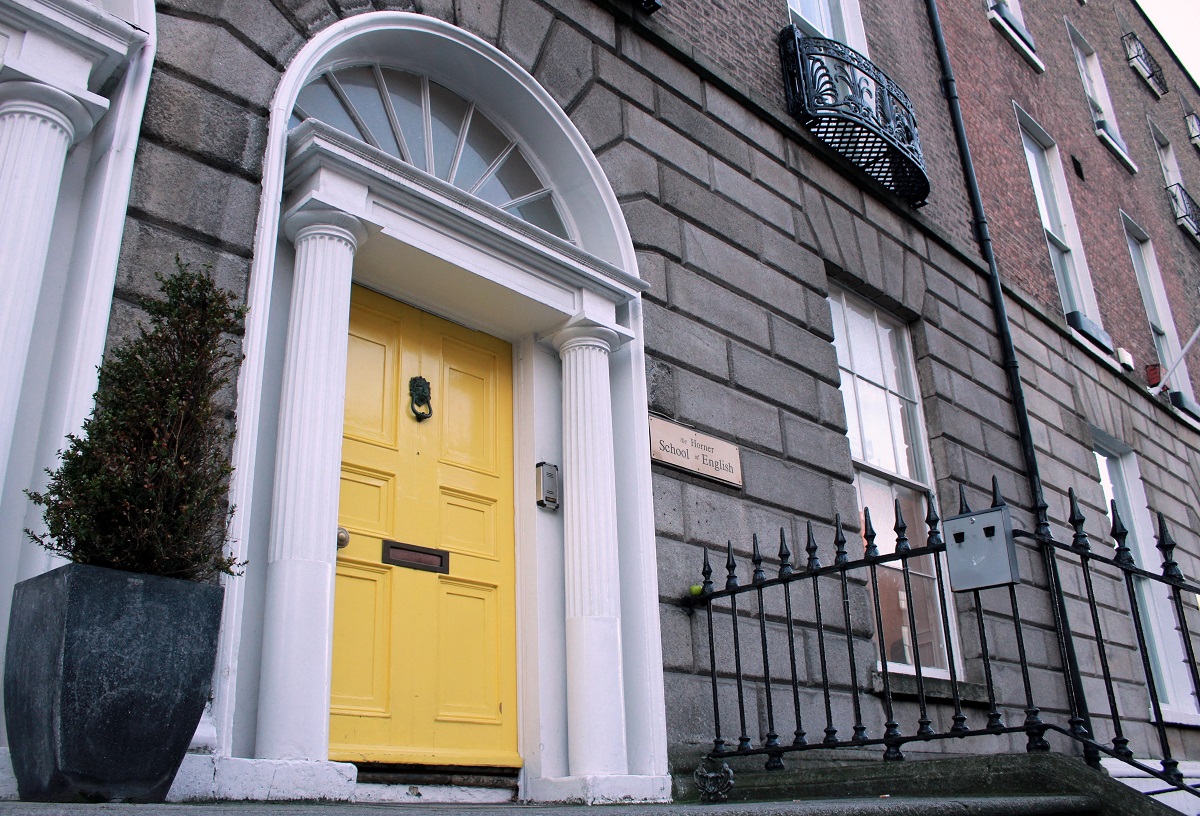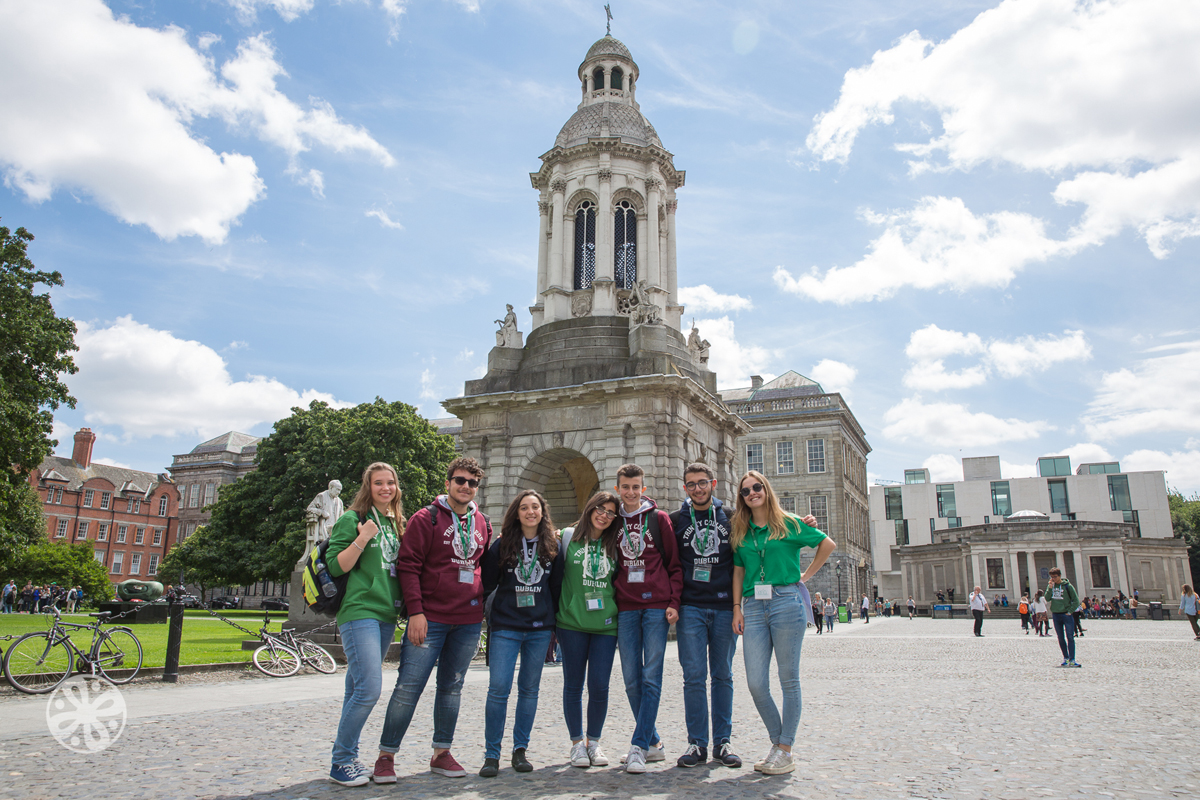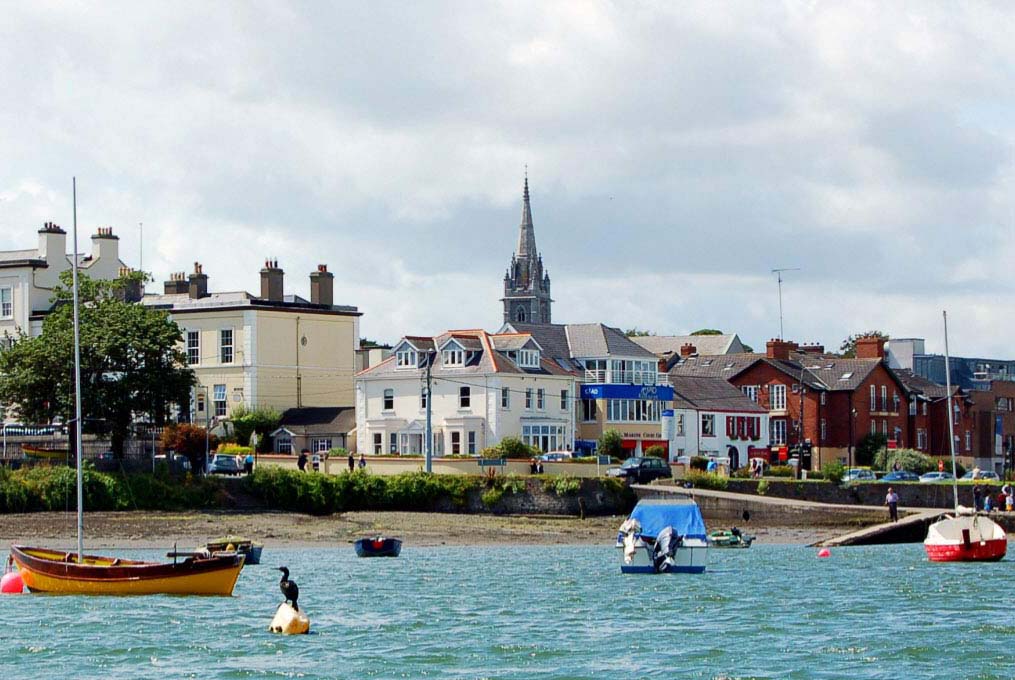
English Courses in Dublin
Overview
About Dublin
“Friendly and fun” are the words most visitors use to describe Dublin, and as a result, it has fast become one of the most popular tourist destinations in Europe. Boasting everything from ancient ruins, to fashionable shops and restaurants, to a famously vibrant nightlife, Dublin caters to all.
Music, culture and art are everywhere in Dublin. Throughout the year, there are hundreds of festivals and concerts, so whether students are interested in dance music or traditional music, there is something for everyone. Areas such as Temple Bar and Vicar Street comprise Dublin’s “Latin Quarter,” and are always lively with a huge selection of restaurants, food and music from all over the world. There is plenty of Irish culture to be discovered around the city with Irish dancing shows, trad sessions (informal traditional music in pubs), buskers in the streets and Gaelic games.
Dublin’s many galleries and museums are all within easy walking distance of each other. Dublin Castle, Merrion Square, Fitzwilliam Square and the surrounding areas, feature some of the best Georgian architecture in all of Europe. Dublin City’s exquisite parks serve as wonderful places for a romantic stroll, or just to escape from the city for awhile. Access to all sports is easy and affordable; golf, tennis and horseriding are all within a bus or train ride. Some of the best golf courses and horse racing tracks in the world can be found in Dublin. The mountains and sea are all close at hand and can be easily reached by Dublin’s modern public transport system.
Why Study English in Dublin?
The Irish Welcome
Over the past two decades, Ireland has become one of the top destinations for English language learning – more than 100,000 visitors come to Ireland every year to study English. Dublin is a vibrant, modern city and has some special advantages for those seeking to come here to study – Dubliners are friendly and love to talk, and students can easily meet other young people—it is also a university city and has one of the youngest populations in Europe. In this way, Dublin offers many opportunities for students to engage in stimulating and enriching conversations. Persons learning English in Ireland and have an unparalleled experience—all of Ireland has a village feel and the people are friendly and helpful to foreign language students and juniors. And not to forget the Irish welcome—even though Dublin is a capital city, unlike others, it feels small and safe, it’s easy to get around, walkable, and students will very quickly feel at home.
High English Educational Standards
Ireland is known for its high standards in English language training and quality of education. Dublin also provides an ideal cultural environment for academic study as a great historical city with a strong literary tradition. Many Irish writers and musicians have come to enjoy a worldwide reputation.
The Irish Accent
The Irish accent, especially the Dublin accent, is clear and easy to understand. This makes it easier to study English and more enjoyable when using the language with locals on a daily basis, during any linguistic stay in Dublin.
Ireland is in Europe
For Europeans, Dublin is in Europe (and only about two hours away by airplane), and for citizens of Eurozone countries, it also has the Euro as currency.
Language Schools and Camps in this Destination
Images of Dublin, Ireland
Things to Do and See During a Vacation Study
Geological Museum
Geology is the science of the study of the earth, its life and processes that have given rise to its present structure. The Geological Museum, in Trinity College Dublin, helps to tell this story.
Imaginosity, Dublin Children’s Museum
Imaginosity, the Dublin Children’s Museum is a unique child centered creative space for children up to nine years of age and their families. The Museum celebrates children’s imaginations on the journey from curiosity to discovery.
Dalkey Castle and Heritage Centre
Dalkey Castle is located in Dublin in the heritage town of Dalkey and has living history actors onsite, ready to welcome visitors.
Malahide Castle and Gardens
Malahide Castle, set on 250 acres of park land in the pretty seaside town of Malahide, was both a fortress and a private home for nearly 800 years and is an interesting mix of architectural styles. A feature of Demense is the Talbot Botanic Garden.
Drimnagh Castle
Drimnagh Castle was, until 1954, one of the oldest continually inhabited castles in Ireland and is an example of an old feudal stronghold. It is located in the South West of Dublin City and can be hired for public events.
Dublin Castle
Dublin Castle is the heart of historic Dublin and is where the city gets its name from the Black Pool—“Dubh Linn,” which was on the site of the present Castle garden. The Castle houses the magnificent State Apartments part of the Viceregal court.
St Patrick’s Cathedral
This is Ireland’s largest church, and was founded next to a well where St Patrick is said to have baptised in 450AD. Built between 1220 and 1260, the Cathedral is one of the few buildings left from the medieval city of Dublin. Jonathan Swift is one of 700 people buried here.
Christ Church Cathedral
Christ Church is Dublin’s oldest building, and dates back to 1038 AD. Renowned for its beauty and architecture, it is home to a famous 12th Century crypt, one of the oldest in Britain and Ireland.
Dublinia
The Dublinia exhibition covers the formative period of Dublin’s history from the arrival of the Anglo-Normans in 1170 to the closure of the monasteries in the 1540s. There are many exhibits here, which include videos, models and reconstructions.
National Museum of Ireland—Archaeology
Built in the 1880s, this holds exhibitions such as the Viking Exhibition, the War of Independence Exhibition. A stroll through time will take you all the way back to 7,000 BC.
National Museum of Ireland—Natural History
The National Museum of Ireland—Natural History, on Merrion Street in Dublin, has galleries of animals from Ireland and overseas, as well as geological exhibits from a total collection of about two million scientific specimens.
National Museum of Ireland-Decorative Arts and History
The National Museum of Ireland-Decorative Arts and History, housed at Collins Barracks Dublin, is home to a wide range of objects, which include weaponry, furniture, silver, ceramics and glassware, as well as examples of folk life and costume.
National Gallery of Ireland
The National Gallery contains over 12,000 pieces of art representing numerous artists from all around Europe, including work by Yeats.
National Transport Museum of Ireland
The National Transport Museum of Ireland, in Howth County Dublin, was established by the Transport Museum Society of Ireland, this collection is Ireland’s only comprehensive assembly of public and commercial road transport.
Irish Museum of Modern Art (IMMA)
The Irish Museum of Modern Art, housed in the magnificent 17th century Royal Hospital building in Kilmainham Dublin, is an artistic gem with its extensive collection of modern and contemporary art.
National Library of Ireland
The National Library of Ireland situated in Dublin City is home to more than 8 million items. It hosts an award-winning exhibition about W.B. Yeats as well as children’s exhibitions. Free guided tours are offered.
Number Twenty Nine
Number Twenty Nine is Dublin’s Georgian House Museum. Situated in the heart of Dublin’s fashionable Georgian streets, this is a unique museum – a restored four-story town house that reflects the lifestyle of a Dublin middle-class family during the period 1790 to 1820.
National Photographic Archive
The National Photographic Archive, in Dublin City, houses the photographic collection of the National Library of Ireland, of over 630,000 photographs.
Science Gallery Dublin
Science Gallery is a venue where art and science meet to ignite creativity and discovery, it’s where ideas provoke and opinions collide. It’s one of the top free cultural attractions in Ireland, and centrally located in Trinity College.
National Print Museum
The National Print Museum in Dublin City collects, documents, preserves, exhibits, interprets and makes accessible the material evidence of printing craft and fosters associated skills of the craft in Ireland.
Kilmainham Gaol
Before its closure in 1924, Dublin’s Kilmainham Gaol housed some of the most famous political and military leaders in Irish history.
Hugh Lane Municipal Gallery of Modern Art
Housed in a finely restored 18th century building known as Charlemont House, the Hugh Lane Gallery houses one of Ireland’s foremost collections of modern and contemporary Irish and international art. It is thought to be among the first galleries of modern art in the world.
Phoenix Park Visitor Center and Ashtown Castle
Dublin’s Phoenix Park is one of the largest and most magnificent city parks in Europe. A lively and entertaining exhibition on the history and wildlife of the Phoenix Park is on display in the Visitor Center.
Guinness Storehouse
Located in the heart of the St James’s Gate Brewery, which has been home to the world famous stout since 1759, you simply cannot leave Dublin without having paid a visit.
The National Wax Museum Plus
The National Wax Museum Plus is a new interactive visitor attraction, located on Foster Place, just off Dame Street, in the Temple Bar district in Dublin city Center.
Farmleigh House
The former Guinness family estate has been carefully refurbished by the Office of Public Works and is open to the public when not hosting visiting dignitaries and heads of state to the capital city, Dublin.
Chester Beatty Library
Situated in the heart of the city center, the Chester Beatty Library’s exhibitions open a window on the artistic treasures of the great cultures and religions of the world—Asia, Middle East, North Africa and Europe.
The National Leprechaun Museum
The National Leprechaun Museum takes visitors deep into Celtic culture to discover what really lies behind tales of leprechauns, rainbows and pots of gold.
Book of Kells
The Book of Kells remains one of the world’s most famous manuscripts with its ornately decorated pages written back around 800 AD. Housed in Trinity College, this book of the four gospels in Latin is one of Ireland’s major visitor attractions.
National Botanic Gardens
Founded in 1795, the National Botanic Gardens are a botanic haven within the bustling capital city. Set in Glasnevin, County Dublin, the gardens contain more than 15,000 plant species from habitats around the world.
Dublin Zoo
No family day out in Dublin would be complete without a visit to Dublin Zoo in the Phoenix Park. It’s a fun filled, stimulating day out for all the family and a place to learn about wild animals, especially those which are endangered.
The Little Museum of Dublin
The Little Museum of Dublin tells the story of Dublin city from 1900 up to 2000 and showcases the remarkable transformation that the city went through in the last century. Visitors to the museum will witness the violent birth of the Irish nation, the conservative years that followed the false economic hope of the 1960s and the Celtic Tiger boom of the 1990s.
Dublin City Hall—The Story of the Capital
Dublin City Hall is a magnificent example of the Georgian architecture for which Dublin is world renowned. Originally used as a financial centre for the merchants of Dublin, today it is the focal point for the elected members of Dublin City Council.
Abbey Theatre
For over 90 years, the Abbey has been the national theatre of Ireland and home of the world-famed abbey Players. The original theatre, destroyed in a 1951 fire, was replaced in 1966 by the current modern 600-seat building.
How to Arrive at your Language Course
By Air
Dublin airport is approximately 10 km (6 miles) north of the city center. Ireland’s airline, Aer Lingus, flies to Dublin from a large number of European cities. The low-cost Ryanair flies between Dublin and a large number of European airports including Rome and Milan, as well as smaller regional airports. Low-fare airline Flybe links Dublin to Exeter, Norwich and Southampton in the United Kingdom, and Jersey and Guernsey in the Channel Islands.
To arrive from the airport to the city center:
Aircoach express service (route 700): Buses leave the airport every fifteen minutes and the journey time to the center is approximately thirty minutes. Aircoach also offers services to other destinations within Ireland, including Cork and Belfast. Dublin Bus offers an express AirLink service (747) every 15 minutes at peak times to the city center and bus station. This service reaches the city center in minutes. A taxi to the city center should cost around €20 to €30: it can be comparable to or cheaper than the bus options if you are in a group of three or more.
By Train
Heuston Station, the center of Dublin, serves Cork and Limerick. Connolly Station, also in the center, serves Belfast, Sligo and Dublin Area Rapid Transit (DART) system. The two main stations are connected by bus and Luas routes. Iarnród Éireann (Irish Rail) is the national railway company. The internet intercity train fares for offpeak services are substantially cheaper than over the counter tickets.
By Bus
A single bus station, Busáras, is the terminus for Bus Eireann services to almost all towns and cities in Ireland. It is located next to Connolly train station, 10 minutes on foot from O’Connell Street. There are also services to Northern Ireland and Eurolines services to Continental Europe. Luggage lockers are in the basement. A number of private bus companies also operate out of the airport and stop in the city center. Kavanaghs serves Limerick and Waterford. Dublin Coach offers an express service to Limerick from Westmoreland Street. Citylink coaches serve Galway and the West, while GoBus provides a non-stop Dublin-Galway and Dublin-Cork service.





















